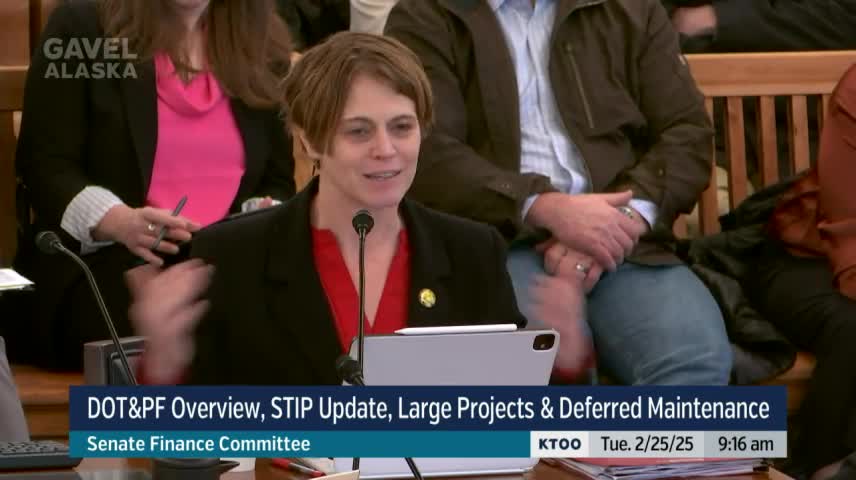Alaska officials challenge federal regulations in Richardson Highway project discussion
February 25, 2025 | 2025 Legislature Alaska, Alaska
This article was created by AI summarizing key points discussed. AI makes mistakes, so for full details and context, please refer to the video of the full meeting. Please report any errors so we can fix them. Report an error »

In a recent meeting of the Alaska State Legislature's Senate Finance Committee, officials discussed ongoing challenges and future improvements in the state's transportation program. The meeting highlighted the complexities of federal regulations and the need for clearer communication with the public regarding transportation programming.
Ryan Anderson, a key speaker at the meeting, emphasized the confusion surrounding Alaska's unique approach to transportation funding and programming. He noted that many states do not operate in the same manner, which can lead to misunderstandings among residents. Anderson expressed a commitment to simplifying these processes in the coming months to enhance efficiency and public understanding.
A significant portion of the discussion focused on the state's interactions with federal partners, particularly in light of recent findings that raised concerns about the interpretation of federal laws and regulations. Anderson pointed out that while Alaska collaborates closely with federal agencies, it is crucial to prioritize the needs of Alaskans. He mentioned that the state has sought legal guidance to navigate these complexities and ensure that Alaska's interests are adequately represented.
The meeting also addressed specific projects, including the contentious Richardson Highway Milepost 3 40 6 project, which had been rejected by the Federal Highway Administration (FHWA). Anderson and his team traveled to Washington, D.C., to present their case to federal officials, arguing against the FHWA's interpretation that the project fell within a metropolitan planning organization (MPO) boundary. This proactive approach underscores the state's determination to advocate for its transportation needs.
Overall, the discussions in this Senate Finance Committee meeting reflect a broader commitment to improving Alaska's transportation infrastructure while navigating the intricate landscape of federal regulations. As the state moves forward, officials aim to enhance collaboration and communication, both within the government and with the public, to foster a more efficient transportation system.
Ryan Anderson, a key speaker at the meeting, emphasized the confusion surrounding Alaska's unique approach to transportation funding and programming. He noted that many states do not operate in the same manner, which can lead to misunderstandings among residents. Anderson expressed a commitment to simplifying these processes in the coming months to enhance efficiency and public understanding.
A significant portion of the discussion focused on the state's interactions with federal partners, particularly in light of recent findings that raised concerns about the interpretation of federal laws and regulations. Anderson pointed out that while Alaska collaborates closely with federal agencies, it is crucial to prioritize the needs of Alaskans. He mentioned that the state has sought legal guidance to navigate these complexities and ensure that Alaska's interests are adequately represented.
The meeting also addressed specific projects, including the contentious Richardson Highway Milepost 3 40 6 project, which had been rejected by the Federal Highway Administration (FHWA). Anderson and his team traveled to Washington, D.C., to present their case to federal officials, arguing against the FHWA's interpretation that the project fell within a metropolitan planning organization (MPO) boundary. This proactive approach underscores the state's determination to advocate for its transportation needs.
Overall, the discussions in this Senate Finance Committee meeting reflect a broader commitment to improving Alaska's transportation infrastructure while navigating the intricate landscape of federal regulations. As the state moves forward, officials aim to enhance collaboration and communication, both within the government and with the public, to foster a more efficient transportation system.
View full meeting
This article is based on a recent meeting—watch the full video and explore the complete transcript for deeper insights into the discussion.
View full meeting
